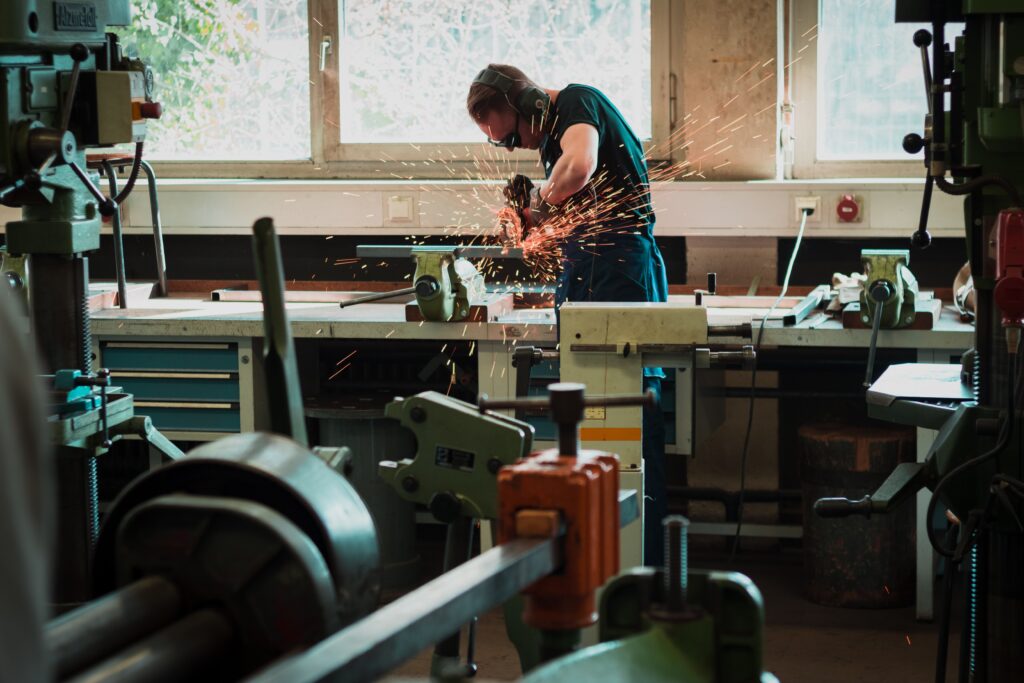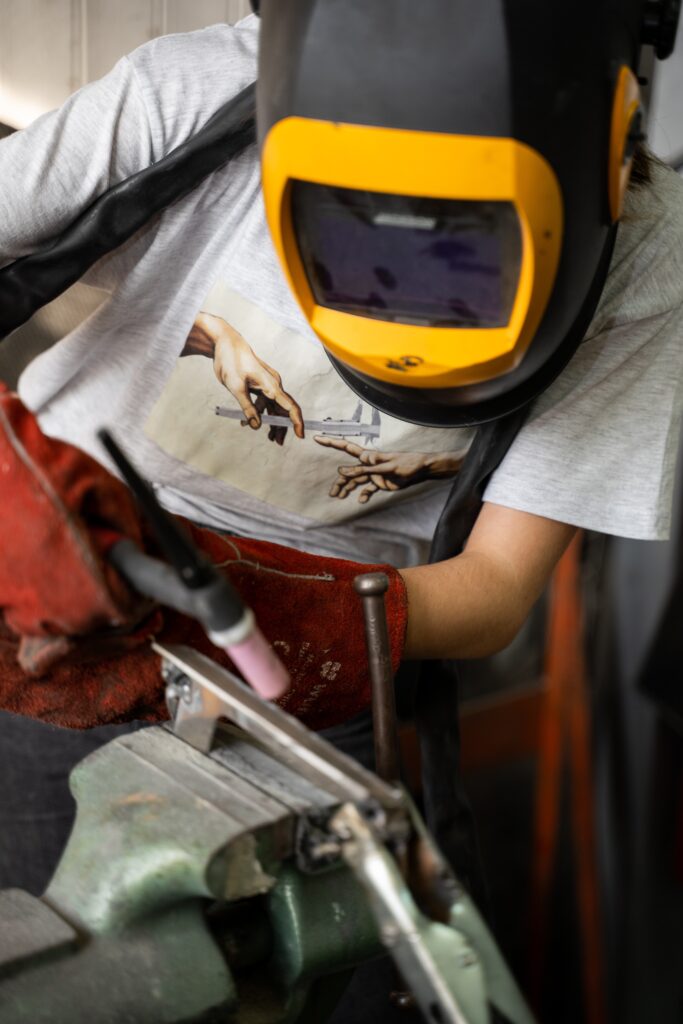In the exciting article “How To Become A Welder Apprenticeship”, your curiosity on breaching the welding industry will be quenched! Detailed instructions and guidelines are provided to start your journey in this unique and profitable trade. You will find useful tips, application processes, and first-hand accounts of apprentice welders that can guide you through this significant step in your life. Brace yourself – it’s time to ignite your passion for welding and morph dreams into reality!
Understanding the Welding Profession
Welding is an essential aspect of many industries, from construction and manufacturing to automotive repair and aeronautics. Being a welder goes beyond simply adhering two pieces of metal together; it’s a profession that demands precision, attention to detail, and a strong knowledge of various welding techniques.
Roles and responsibilities of a welder
As a welder, you will be responsible for reading blueprints and diagrams, measuring and cutting workpieces, and using specialized equipment to bond materials together. Your ability to follow safety procedures and maintain equipment will be crucial in ensuring both your work’s quality and your well-being.
Various types of welding
Your career in welding will expose you to various types of welding, including MIG (metal inert gas), TIG (tungsten inert gas), and stick welding. Each type has its unique applications, benefits, and challenges, so understanding the differences and mastering multiple methods can make you more versatile and marketable.
Working conditions and requirements
Welding can be physically demanding and often involves working in various conditions, both indoors and outdoors. As a welder, you may need to work in awkward positions or confined spaces. Consequently, physical fitness, good eyesight, and the ability to withstand prolonged periods of standing or even heavy lifting are crucial components of this profession.
Educational Requirements for Welders
Becoming a welder doesn’t always require a college degree, but you’ll need specific educational qualifications to kick-start your career in this trade.
High school prerequisites
Your journey to becoming a welder often starts in high school. Subjects like mathematics, physics, and technical drawing are essential prerequisites as they lay the foundation for understanding complex blueprints and making precise measurements and cuts.
Importance of Mathematics and Science
Math and science are particularly important for aspiring welders. For instance, math concepts like geometry and algebra help with understanding blueprints and making precise measurements. Science, especially physics, offers insights into the metallurgical aspects of welding, such as understanding how different metals react under varying temperatures.
Technical Vocational Training
Vocational welding programs are designed to provide you with practical skills and theoretical knowledge necessary for entry-level welding jobs. These programs often involve hands-on training in various welding techniques and safety procedures, as well as related topics such as blueprint reading and weld inspection.
Community College Welding Programs
If you prefer a more academic route, community college welding programs offer a blend of classroom instruction and lab work. These programs often lead to a diploma or associate degree in welding technology, which can boost your employability and open more doors for career advancement.

Choosing the Right Welding Apprenticeship Program
Apprenticeships are essential for gaining hands-on experience and are typically provided by trade unions, professional associations, or private companies.
Factors to consider when choosing a program
When choosing the right apprenticeship program, consider factors like the program’s length, hands-on training opportunities, and the quality of trainers. It’s also worth considering whether the program offers job placement support upon completion.
How to research and compare programs
Although every program will market itself as the best, it’s up to you to do your research to confirm their claims. Look at online reviews, reach out to current or former apprentices, and compare the curriculum of various programs to make an informed choice.
Local vs out-of-state programs
While out-of-state programs may offer unique opportunities, local programs are more accessible and often cheaper. However, think about your long-term goals and the type of work you wish to do, as some specialized types of welding might require training only offered out-of-state.
Application Process for Welding Apprenticeships
Applying for a welding apprenticeship can be a rigorous process, but with the right preparation, it can be a smooth endeavor.
Understanding the application process
Each apprenticeship program has a specific application process, so ensure you fully understand that before you apply. This may involve filling out application forms, submitting relevant documents, and even attending interviews or tests.
Compiling the necessary paperwork
Be prepared to gather documents like school transcripts, identification details, and letters of recommendation. Keeping these documents organized will help you remain poised and prepared throughout the application process.
Writing a professional welding apprenticeship application letter
Your application letter is a chance to showcase your passion for welding and the skills you’d bring to an apprenticeship. It should be well-written, concise, and tailored to the specific program.
Preparing for the welding apprenticeship interview
If you’re invited for an interview, take it as an opportunity to highlight your skills, experiences, and professionalism. Research common interview questions, dress appropriately, and be prepared to showcase your knowledge of the industry.

Acing the Welding Aptitude Test
The welding aptitude test, often part of the application process, assesses your knowledge and skills in relevant areas.
Understanding the welding aptitude test
The test may cover areas like math, reading comprehension, mechanical reasoning, and possibly a practical welding exam. By understanding the test’s structure and content, you can prepare effectively and increase your chances of success.
Resources for preparation
Many resources are available for test preparation, including textbooks, online courses and tutorials, and aptitude test prep books. Using these resources to revise theories and practice questions can boost your confidence and score.
Test-taking strategies
Simple strategies, such as managing your time wisely, reading questions thoroughly, and not rushing through the test, can make a significant difference to your performance. Remembering that it’s okay to skip a question and come back to it later might save you precious time.
Analyzing and improving your performance
After the test, take time to reflect on the areas you did well in and those you struggled with. Use this insight for further learning and improvement.
Commencing the Welding Apprenticeship
Once you secure an apprenticeship, it’s time to roll up your sleeves and immerse yourself in the real-world welding environment.
First day expectations
Showing up early, having the needed tools, and wearing the required safety gear are key to make a good impression on your first day. It’s also crucial to display an eagerness to learn and a positive attitude.
Tools and equipment needed
Depending on the program, you may need to procure some tools yourself, such as welding helmets, gloves, and basic hand tools. Always check with your program before purchasing any items.
Apprenticeship etiquette and ethics
Maintaining professionalism and demonstrating respect for your peers and superiors is crucial. Taking your tasks seriously, asking for help when needed, and staying productive demonstrate a positive work ethic.
Safety protocols in welding
As a inherently risky profession, adhering to safety measures is crucial in welding. These may include using the appropriate protective gear, maintaining clean workspaces, and following the correct procedures for handling tools and machinery.

Mastering Essential Welding Skills
To get the most out of your apprenticeship, you must seek out opportunities to practice and improve your welding skills.
Key welding skills for apprentices
While each apprenticeship program has different focuses, some essential skills to master include various types of welding techniques, reading and interpreting blueprints, measuring and cutting workpieces accurately, and maintaining welding equipment.
Techniques for improving accuracy
Practice is key to improving your accuracy. Also, asking for feedback from more experienced welders and learning from their expertise can help you refine your techniques.
Understanding welding blueprints and schematics
Being able to read blueprints is crucial to welding. These often-complex diagrams outline what needs to be done, so understanding them is vital for both your success and safety. Take every opportunity during your apprenticeship to refine your blueprint reading skills.
Learning from mistakes and feedback
Mistakes are inevitable, but they’re also learning opportunities. Accepting constructive criticism and using it to better your skills can significantly improve your performance.
Advancing in Your Welding Career
completing your apprenticeship isn’t the end of your learning journey, but rather, it’s the beginning of your career advancement.
Steps after completing your apprenticeship
With your apprenticeship completed, you’re now eligible for entry-level welding jobs. From there, you could consider obtaining advanced welding certifications, seeking specialized roles, or even starting your own welding business.
Welder certifications and licensure
Certifications give you credibility and may greatly enhance your earning potential. Various institutions can certify your skills in different welding techniques, each requiring their own set of tests and renewals.
Continuous learning and specialization
Despite the physical nature of welding, it’s still a rapidly evolving field. New technologies and welding methods continually emerge, which means continued learning is vital to stay relevant in your career.
Career growth and opportunities in welding
With more experience and better skills, you may qualify for roles with more responsibility and better pay. In addition, specialized sectors, such as underwater welding and aerospace welding, offer unique and lucrative opportunities.
Financial Aspects of a Welding Apprenticeship
Entering an apprenticeship often involves considerable financial implications, but careful planning can ensure you make sound decisions.
Understanding wages during apprenticeships
During your apprenticeship, you’ll likely receive a stipend or wage, although it’ll likely be less than experienced welders earn. It’s also important to consider other costs, such as commuting, equipment, and possibly training fees.
Increases in pay with experience and certifications
The more experience and certifications you gain, the more your earning potential increases. Experienced, specialized welders can command high salaries, particularly in industries like oil and gas, aerospace, and shipbuilding.
Financial aid and scholarship opportunities for welders
There are numerous scholarships, grants, and financial aid options available to aspiring welders. These could be from the government, the school or apprenticeship program you’re attending, or industry-specific organizations.
Costs associated with welding apprenticeships
While apprenticeships are often subsidized by employers or trade unions, there may still be costs associated with tools, uniforms, and transport. Ensure to budget for these before starting your apprenticeship.
Challenges of a Welding Apprenticeship and How to Overcome Them
Every apprenticeship comes with its unique set of challenges, but these can provide opportunities for growth and resilience.
Common difficulties faced by welding apprentices
Some common challenges include physically demanding work, cultivating the necessary precision and detail-orientation, and mastering complex techniques. Remain patient with yourself, practice often, and don’t hesitate to ask for help.
Balancing work, study, and personal life
Juggling your apprenticeship with studying and personal commitments can be tough. Prioritize your tasks, take breaks when needed, and maintain a healthy lifestyle to help manage your time and responsibilities.
Stress management and self-care for welders
Welding can be stressful, so ensuring you care for your mental health is vital. Regular exercise, healthy eating, adequate sleep, and relaxation techniques can help manage stress levels.
Seeking support and mentorship during your apprenticeship
Reach out to your colleagues, mentors, or other professionals if you’re struggling. They can provide support, advice, or feedback to help you navigate your apprenticeship journey in a more manageable and fruitful way. Remember, everyone starts somewhere, and it’s okay to ask for help. Enjoy the journey and keep your eyes firmly on the reward of becoming a skilled welder in the end!
